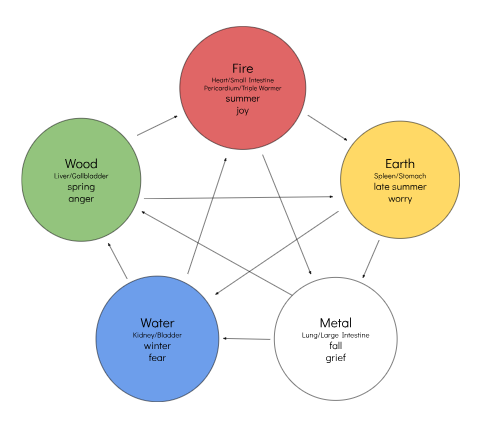The Language Of Acupuncture
- Susannah Pitman, DAc

- Jul 28
- 2 min read

The above illustration comes from the Chinese classic Lei-Ching, Vol. 3. It's an early depiction of the organs of the human body. At first, it doesn't look anything like a Western anatomical illustration of the human body, but the longer it's studied, the more it makes sense. When learning about the organs from an Acupuncture point of view, the emphasis is significantly placed on its functions and less on the actual anatomy. With that in mind, look at the illustration. Towards the top of the torso you'll see what looks like leaves. These are depicting lungs, which provide us the exchange of oxygen and carbon dioxide, or Qi, in the body, much like trees do so in nature except they do the reverse by exchanging carbon dioxide for oxygen.
This is one of many examples of how nature is used in Acupuncture to describe the human body.
There's also Five Element Theory, which I've written about several times before. There are Five Elements - Wood, Fire, Earth, Metal and Water - and organs, some meridians, and some acupuncture points are designated a specific Element. Seasons and emotions are also associated with specific Elements. The body functions best when these elements are in balance, meaning one isn't overpowering the other. If signs and symptoms point towards one element being excessive, there are treatment strategies for bringing balance back to those elements. In a very basic way, it's a bit like rock/paper/scissors except with five things instead of three. Wood grows out of Earth. Earth consumes water. Water puts out Fire. Fire melts Metal. Metal chops Wood.

The nature references do not stop there. Each acupuncture point has a name. In our modern times, these points are often referred to by the name of the organ associated with the meridian on which they're found as well as a number. For instance, the acupuncture point Pericardium 2 is also named "Celestial Spring". Kidney 6 is also known as "Shining Sea".
Additionally, some Acupuncture points have an additional designation also indicated by nature. We have Well, Spring, Stream, River and Sea points, which indicate areas along the meridians where the flow of Qi grows.
Then there is also diagnosis in Acupuncture, and words from nature make another appearance in these conditions. Dampness, Heat, Cold and Wind are all words incorporated into descriptions of patterns of disharmony.
As someone who loves nature, this is why I love the language of Acupuncture.







Comments